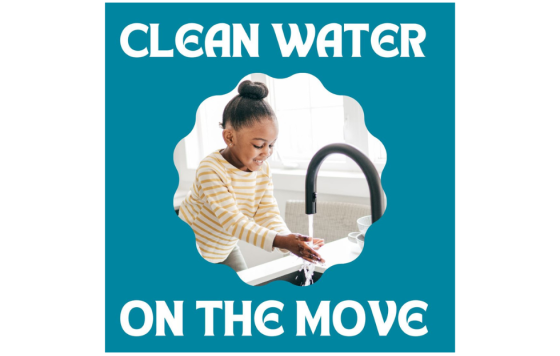
According to a 2023 U.S. Geological Survey, at least 45% of tap water in the U.S. contains one or more types of PFAS. This contamination didn’t occur overnight—it has been building up in our environment for decades, beginning with the initial manufacturing of PFAS in the 1940s. An acronym for per- and polyfluoroalkyl substances, PFAS have gained popularity due to their unique ability to make products water, stain, and grease resistant. However, what sounded like dream chemicals quickly became a nightmare.
PFAS are now dubbed the “forever chemicals” due to their inability to fully break down for thousands of years and are known to be extremely mobile in the environment. Even worse, they are toxic to humans at very low levels and have been linked to cancer, heart disease, birth defects, infertility, and many other diseases.
Though the federal government has taken steps to address PFAS in drinking water, the widespread presence of these substances and the severity of associated health outcomes indicates the need to move beyond reactionary measures and embrace a preventative approach that tackles contamination at the source.
PFAS in Consumer Products
PFAS are found in many common household items. While some are more well-known, such as non-stick pans or carpets, many people may be exposed to PFAS daily without their knowledge through personal care products. These can include cosmetics, skin care items, or menstrual hygiene items.
A recent study published by the American Chemical Society found that 33% of period underwear and 25% of reusable pads studied had PFAS intentionally added, often used for their waterproofing ability. Yet, since the federal government doesn’t regulate PFAS in retail goods, companies are not required to disclose their presence, leaving consumers in the dark about their exposure to these harmful chemicals.
From Products to Pollution
Once they are in products, PFAS make their way into our bodies of water in multiple ways. This can include (but is not limited to) releasing the chemicals into wastewater when washing PFAS-treated clothes, landfill leachate containing PFAS from contaminated products seeping into groundwater, or rinsing off PFAS-ridden make-up down the drain and into water systems.
Outside of household items, manufacturing processes can also lead to PFAS in our nation’s waters. The Environmental Working Group has identified nearly 42,000 industrial sites across the U.S. that are known or suspected to use PFAS, potentially discharging the toxic chemicals into source water. Yet still, no finalized Clean Water Act guidelines dictate how much PFAS various industries can release, leaving our drinking water sources vulnerable and polluters unaccountable.
Drinking Water Standards Aren’t Enough
Last year, the Environmental Protection Agency (EPA) announced the first national plans to regulate PFAS in drinking water. Through the Safe Drinking Water Act, they developed standards for six PFAS that public water systems (PWS) would have to meet starting in 2029.
While this moment was a win for public health and advocacy groups like Clean Water Action, it was a rather backwards approach—forcing PWS to remove PFAS from water after contamination has occurred rather than preventing pollution at the source. This wasn’t a viable long-term plan and didn’t address the issue at the root, placing strain on PWS and potentially leading to higher water bills for communities.
UCMR 5 Showing Severity
Further demonstrating the threat PFAS in drinking water poses to public health, in 2021 the EPA decided to focus the majority of the fifth Unregulated Contaminant Monitoring Rule (UCMR 5) on these substances. The UCMR is a national program that tracks unregulated contaminants in drinking water and is updated every five years. Of the 30 chemicals included in this current cycle, 29 are PFAS—including all the ones the EPA has validated drinking water testing methods for.
In addition, over $100 million has been allocated between 2022-2026 for these efforts, signaling the importance of understanding the prevalence of this threat. And yet, still no substantial, precautionary PFAS regulation.
Federal Disregard for PFAS
Despite growing evidence pointing to the sheer magnitude PFAS contamination, the federal government has failed at taking aggressive action. In 2022, the EPA released a guidance memo directing states to limit the discharge of PFAS into bodies of water using water pollution permits. Though this alluded to federal standards to follow, the agency has since been slow to provide the technical tools needed to create federal PFAS water pollution standards. Even more concerning, the EPA recently announced plans to delay and reconsider the limits established for the six PFAS in drinking water, weaking the protections before they could even take effect.
Federal PFAS research is also under attack. Since President Trump’s second inauguration, many PFAS-centered research funds have been cut in an effort to reduce federal spending. This included $15 million that was allocated to examine how PFAS spread on farms, moving from pesticides and sewage sludge to crops and water sources. Similarly, the EPA has faced a 23% cut to its workforce and the closing of its entire research division. This all highlights a dangerous trend: shifting back from preventative measures at a time when forward-thinking is critical.
So, What Should Be Done?
With overwhelming data displaying that PFAS are both harmful and widespread, the time for bold federal action is now. Instead of backtracking or revisiting already-proven standards, the EPA should focus its efforts on developing robust, forward-thinking PFAS regulations. A preventative, upstream approach that restricts PFAS in consumer products and manufacturing processes is needed, while also maintaining national drinking waters standards to ensure full protection at the tap.
Krista Vanderpuye is a summer Environmental Fellow through the Yale School of the Environment’s Justice, Equity, Diversity, and Sustainability Initiative. She is currently pursuing a Master of Public Health at the University of North Carolina Gillings School of Global Public Health and is concentrating in the Environment, Climate, and Health. Her interest in contaminants in drinking water stems from her current position as a Graduate Research Assistant in Warren County, NC. There she engages in community-based participatory research focused on using youth citizen scientists to test drinking water and other parts of the home for various contaminants.


